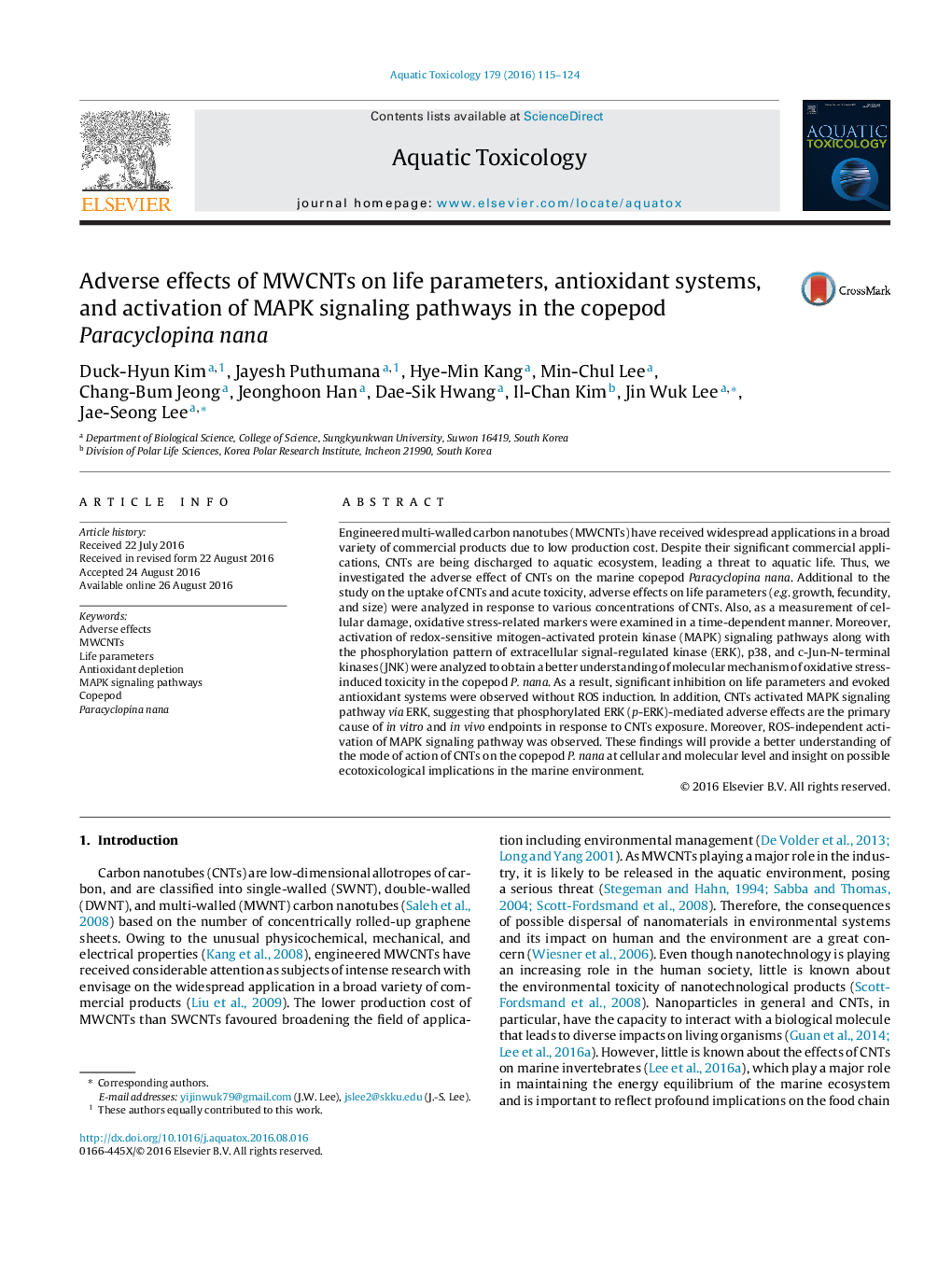| Article ID | Journal | Published Year | Pages | File Type |
|---|---|---|---|---|
| 4528896 | Aquatic Toxicology | 2016 | 10 Pages |
•Adverse effect of CNTs on life parameters (e.g. growth, fecundity, and size) was examined on the marine copepod Paracyclopina nana.•Oxidative stress-related markers were examined in a time-dependent manner.•Phosphorylation pattern of ERK, p38, and JNK were analyzed in response to CNTs.•CNTs activated MAPK signaling pathway via ERK and ROS-independent activation of MAPK signaling pathway was observed.
Engineered multi-walled carbon nanotubes (MWCNTs) have received widespread applications in a broad variety of commercial products due to low production cost. Despite their significant commercial applications, CNTs are being discharged to aquatic ecosystem, leading a threat to aquatic life. Thus, we investigated the adverse effect of CNTs on the marine copepod Paracyclopina nana. Additional to the study on the uptake of CNTs and acute toxicity, adverse effects on life parameters (e.g. growth, fecundity, and size) were analyzed in response to various concentrations of CNTs. Also, as a measurement of cellular damage, oxidative stress-related markers were examined in a time-dependent manner. Moreover, activation of redox-sensitive mitogen-activated protein kinase (MAPK) signaling pathways along with the phosphorylation pattern of extracellular signal-regulated kinase (ERK), p38, and c-Jun-N-terminal kinases (JNK) were analyzed to obtain a better understanding of molecular mechanism of oxidative stress-induced toxicity in the copepod P. nana. As a result, significant inhibition on life parameters and evoked antioxidant systems were observed without ROS induction. In addition, CNTs activated MAPK signaling pathway via ERK, suggesting that phosphorylated ERK (p-ERK)-mediated adverse effects are the primary cause of in vitro and in vivo endpoints in response to CNTs exposure. Moreover, ROS-independent activation of MAPK signaling pathway was observed. These findings will provide a better understanding of the mode of action of CNTs on the copepod P. nana at cellular and molecular level and insight on possible ecotoxicological implications in the marine environment.
